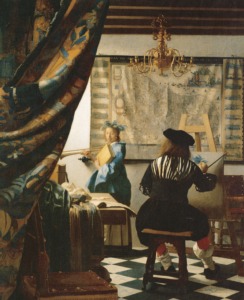
Rembrandt’s perfect drawing, Caravaggio’s invention of Hollywood lighting, Monet capturing a moment in time. David Hockney and critic Martin Gayford discuss the craft behind the greatest art.
David Hockney: The moment you put down two or three marks on a piece of paper, you get relationships. They’ll start to look like something. If you draw two little lines they might look like two figures or two trees. One was made first, one second. We read all kinds of things into marks. You can suggest landscape, people and faces with extremely little. It all depends on the human ability to see a mark as a depiction.
In a way, Vermeer and Rembrandt are opposites. But Rembrandt is the greater artist, I think, because he’s got more ingredients than Vermeer. Rembrandt put more in the face than anyone else ever has, before or since, because he saw more. And that was not a matter of using a camera. That was to do with his heart. The Chinese say you need three things for paintings: the hand, the eye and the heart. I think that remark is very, very good. Two won’t do. A good eye and heart is not enough, neither is a good hand and eye. It applies to every drawing and painting Rembrandt ever made. His work is a great example of the hand, the eye – and the heart. There is incredible empathy in it.
